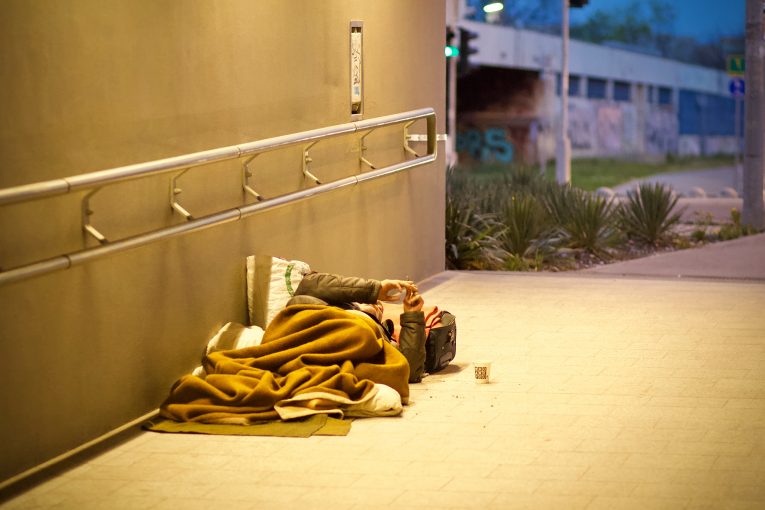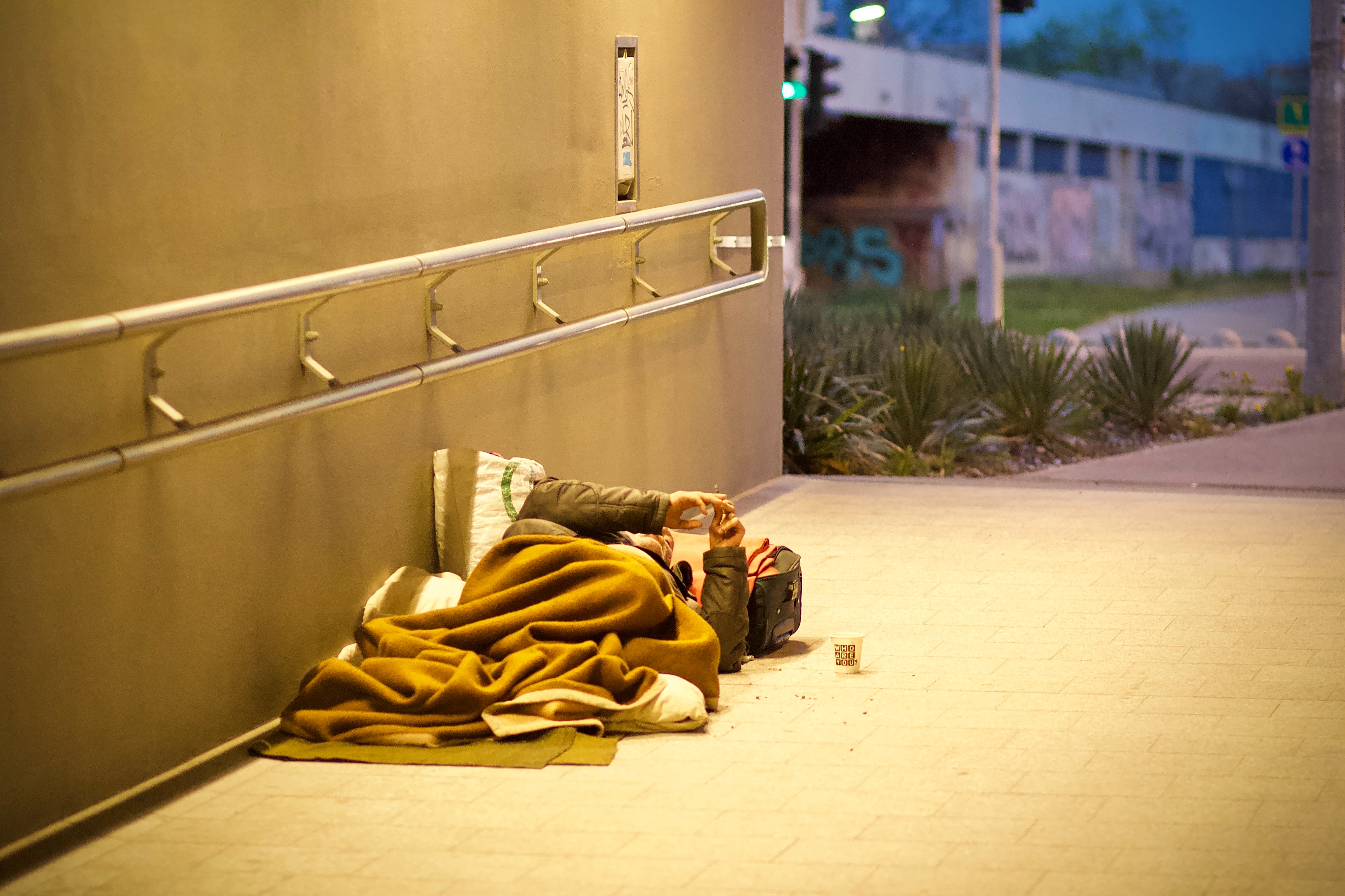

By David M. Greenwald
Executive Editor
A local official keeps wanting to link homelessness to drugs and mental illness—but all the data points to the chief cause of California’s large homeless population being the high cost of housing.
How vulnerable are these marginal populations? A study conducted by the real estate firm Zillow a few years ago found that a five percent rent hike would push more than 2000 residents into homelessness.
That should give us an idea of just how vulnerable these populations are. For a $1000 a month rent, we are talking about a $50 increase being enough to push 2000 people into homelessness.
The LA Times noted “the study found that rent increases are closely tied to burgeoning homelessness in Los Angeles, Seattle and New York City, where there is little low-income housing for people priced out of gentrifying neighborhoods to retreat to.”
A report from the LAO earlier this year, found, “While homelessness is a complex problem with many causes, the high costs of housing is a significant factor in the state’s homelessness crisis. More people experience homelessness in California than any other state.”
Housing affordability, the LAO found, is a “serious and widespread challenge in California.”
They note, “Households with the lowest income face the highest cost pressures. In California, around 2.5 million low-income households are cost burdened (spending more than 30 percent of their incomes on housing). Over 1.5 million low-income renters face even more dire cost pressures—spending more than half of their income on housing.”
Additionally, “an average California home costs 2.2 times the national average. California’s average monthly rent is about 50 percent higher than the rest of the country.”
While issues such as substance use and mental illness might exacerbate chronic homelessness, researchers last year found that it was cost of housing that was driving the homelessness problem.
In their University of California Press book “Homelessness is a Housing Problem,” authors Clayton Page Aldern and Gregg Colburn analyze the data.
In examining the rate of homeless per 1000 people, “they found communities with the highest housing costs had some of the highest rates of homelessness.”
In an article that appeared in the San Diego Union Tribune, the researchers noted they “are not suggesting that mental illness, addictions and other issues are not contributing factors to homelessness.
“That’s certainly not the point of the book,” Colburn said. “But I firmly believe that we can’t treat our way out of this problem. You could fix all the addiction in San Diego right now and you’d still have a problem with homelessness because there just aren’t places for people to go who have lower levels of income.”
Lisa Jones, executive vice president of strategic initiatives at the San Diego Housing Commission, agreed on a connection between housing and homelessness.
“High-cost rental markets that far outstrip area median incomes — and push renters into paying more than 50% of their income toward rent — certainly are a significant contributing factor to making households at high risk of experiencing homelessness,” she wrote in an email.
“When households do experience homelessness, those factors make it even harder for them to exit homelessness by renting in the private rental market,” Jones continued. “We also know that the longer a household experiences homelessness, the more likely other key quality-of-life factors will be affected, such as physical and mental well-being.
“We need to continue to strive to build a homelessness response system that has a diverse spectrum of resources to meet a household’s unique needs,” she concluded. “At the same time, we need to continue to support the efforts of policy makers at local, state and national levels to increase affordable housing development and rental assistance opportunities, streamline application processes, and reduce construction costs to increase production.”
In November, Housing California noted, “Recent historic investments in homelessness, affordable housing, and tenant protections are ending homelessness for tens of thousands of Californians. In fact, local homeless response systems are housing more people than ever before. Yet, given the decades of disinvestment that preceded, these recent one-time investments are only a down payment on what must be ongoing and more significant funding for the solutions we know work to end homelessness: deeply affordable housing, supportive services, and targeted homelessness prevention to curb the tide of people entering our shelters and living on our sidewalks.”
They add, “Homelessness is increasing, not because State funding isn’t working, but because it’s just not enough to meet the scale of our need, especially in the face of systemic drivers like unprecedented rent increases, housing discrimination, and chronic workforce shortages largely driven by a long legacy of inconsistent public funding.”
They argue that “we cannot expect local homeless response systems to make long-term, ambitious plans with only one-time state investments, and without addressing affordable housing, healthcare, tenants’ rights, re-entry from the criminal justice and other systems, and glaring gaps in existing safety net systems.”
They add, “People experiencing homelessness have been failed by multiple systems and deserve thoughtful, strategic, and inclusive policy solutions.”
In their view, the solution is simple: “permanent housing.”
This is the view we keep hearing over and over again—housing. And permanent supportive housing for those with substance use and mental health needs.







Facts say there’s a clear link between drug using and homelessness.
Absolutely there’s a link between drug use and homelessness (although causality isn’t always clear). And there’s a link between despair and drug use. That’s why the opioid epicenter centered on Appalachia and neighboring regions where the greatest economic despair prevailed. The solution to reducing drug use is giving people a reason live vibrantly. The solution we know will not absolutely work since we’ve run that experiment for the last half century is incarceration (along with the fact that it’s extremely expensive compared to other solutions.)
The had “economic development” in Appalachia.
It was called the coal-mining industry.
That’s not economic development
Really?
How was it different than any other “economic development”? (Other than being uniquely environmentally-destructive.)
Economic development: “The process in which people in a country become wealthier, healthier, better educated, and have greater access to good quality housing.”
“Economic Development is programs, policies or activities that seek to improve the economic well-being and quality of life for a community.”
Though economic development priorities vary, economic development strategies often aim for common, positive results, such as:
Creating more jobs and more job variety
Keeping businesses and getting new ones
A better quality of life
More people and businesses paying taxes
More productive use of property
Promoting your community’s assets
Making and selling more local products
Getting more skilled workers living in your community
The coal industry is the very definition of economic exploitation. A few at the top got wealthy by keeping the average worker at below subsistence wages at tremendous cost to their health and well being.
In regard to the premise of this article, shouldn’t there be a lot more homeless people in a place like Atherton, compared to a place like Sacramento?
This would also require a determination regarding whether or not a given homeless person had a home in those respective communities – which they then got “priced out of”.
Are there lots of former Atherton residents, roaming the streets there?
Also seems unlikely that long-term renters in a place like San Francisco (which has rent control) would be “priced out”. And yet, there’s lots of homeless people there. Did each of them decide to give up on their rent-controlled unit – couldn’t even afford that?
Also, has homelessness decreased in conjunction with the decrease in housing prices (both “for sale” and “rental” housing?
https://www.sfgate.com/realestate/article/bay-area-real-estate-market-prices-down-17871937.php
https://www.sfchronicle.com/sf/article/s-f-apartment-rents-fell-again-tech-layoffs-17757376.php
I was in San Francisco this last weekend, went to Fisherman’s Wharf and checked out a Giants game. The Wharf wasn’t too bad, the area around Oracle was fair but we stayed at the Hilton in the downtown and what a pig stye. Homeless, filth and garbage everywhere. Most looked to be totally drugged out. It’s amazing that this once beautiful city is letting a few thousand homeless drug addicts ruin it for everyone.
Your solution?
The opposite of what San Francisco politicians are doing now.
That’s not an answer
Yes it is because SF politician’s policies have led to this mess.
You’re dodging because you likely don’t have an answer. A huge problem in SF in of course cost of housing. Then again, the cost of housing is ridiculous in Manhattan as well, but they don’t have the unsheltered homeless population. Why? Because NY provides shelter for its unhoused population and California doesn’t.
Because the mayor is clearing the camps, unlike San Francisco. But even that is now failing because of the 70,000 new homeless immigrants that recently went to New York. With the Democrat unfettered immigration policies the problem has no chance of ever getting solved.
https://www.nytimes.com/2022/03/30/nyregion/nyc-homeless-eric-adams.html
NY has a right to shelter law: https://www.nytimes.com/2023/05/10/nyregion/nyc-right-to-shelter-migrants.html
But it might be coming to a problem there as well.
Large shelters, located in areas where they won’t impact others.
Then, enforce the law against camping in the streets.
And for any organization that wants to help the homeless (e.g., with food or supplies), require them to do so at the SHELTERS.
And for homeless people who don’t want to avail themselves of that option, they can find a less-visible, intrusive place to camp. Like they used to, before policies were changed.
Seems ironic, that you have to PAY to camp in many campgrounds in the wilderness – where you’re SUPPOSED TO camp. (Though there’s vast public lands where it’s still free.)
Reminds me of how some advocate for eliminating parking tickets for those who “can’t afford it”, but charging those who supposedly can.
In any case, San Francisco sure is on “top of the situation” if you park your car illegally for 5 minutes, even if they can’t find a way to enforce other basic laws. Do you suppose that has anything to do with money?
Here’s (sort of) an example of what I’m referring to (though it’s more comprehensive than what I suggested. I don’t think I’ve seen this place, but I believe it’s located on the outskirts of town – probably where no one will complain about it.
Truth be told though – Woodland has so many “vacant” or grossly underused spaces within the city that you could probably fit the entire city of Davis within those spaces. (Hey – maybe that’s one way to make Davis prices “cheaper”?)
Something like this might already qualify for the existing exemption to Measure J, as well:
By the way, thanks “Walter”.
https://www.cityofwoodland.org/1248/East-Beamer-Campus